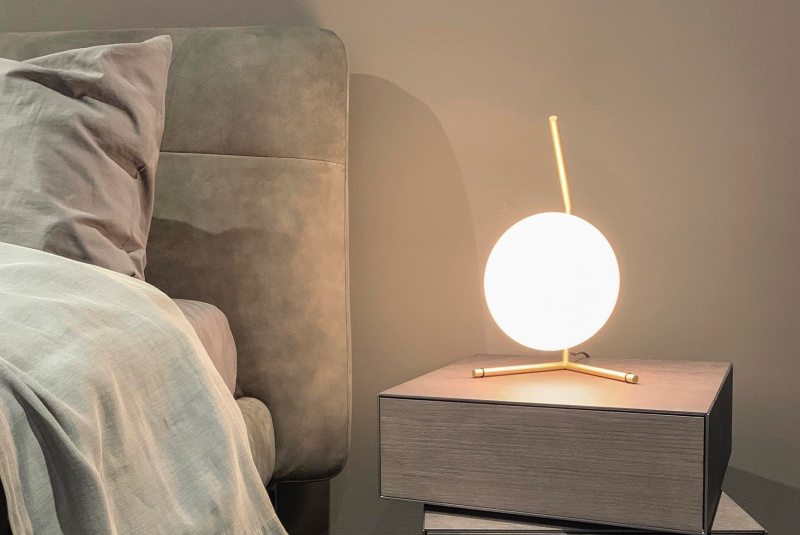
If you live in a latitude that’s not particularly close to the equator, you’re likely all too familiar with the late sunrises and early sunsets in the winter (or summer, for our Southern Hemisphere readers). An overall lack of daylight, coupled with the reduced intensity of the sun’s rays in the winter, makes for a significant paucity in the amount of sunlight and vitamin D you can soak up. Studies have found that this can lead to a dip in your energy and mood—even to the point of depression—in a condition called Major Depressive Disorder (MDD) with seasonal patterns (formerly Seasonal Affective Disorder (SAD)).
Light therapy can be used to supplement natural sunlight in the winter, or at other times of insufficient sun exposure, to counteract the effects of the lack of sunlight. But, does light therapy actually alleviate depression and elevate your mood? How does light therapy work? How do you do it? Which light therapy lamps are best? Winter is coming and if you’ve battled irritability, fatigue, and a ho-hum feeling of seasonal blues in the past, keep reading for the answers to all the top questions about light therapy to see if light therapy may be the mood-boosting strategy you need to beat the winter blues.
What Is Light Therapy?
Light therapy, which is also termed phototherapy, refers to a treatment modality that uses exposure to an artificial light source to alleviate symptoms of major depressive disorder (MDD) with seasonal patterns, other types of depression and mood disorders, and sleep disorders. The patient sits in front of a lamp or lightbox with a specific brightness for a designated amount of time each day—typically 30 minutes in the morning soon after waking up.
How Does Light Therapy Help With the Winter Blues?
Researchers have determined a couple of factors that contribute to the depressed mood and lack of energy that many people feel during the winter due to the reduced intensity and duration of the daily exposure to natural sunlight. For example, the truncated length of “daytime” in the winter disrupts the body’s circadian rhythm, the biological 24-hour clock that governs sleep-wake cycles. This can alter melatonin production and release, affect sleep patterns, and cause fatigue and decreased alertness.
Light therapy also seems to interfere with the reuptake of serotonin in the brain. As serotonin helps elevate the mood and bring about feelings of happiness, many antidepressants actually work by increasing the reuptake of this neurotransmitter. That said, though the mechanism of action is still somewhat unclear, light therapy boxes also seem to increase the reuptake of serotonin by receptors in the brain, while also helping regulate the circadian rhythm to its more ideal pattern. In this way, light therapy has been found to help offset seasonal depression, regulate sleep patterns, and increase wakefulness and alertness.
What Does Light Therapy for Seasonal Depression Entail?

If you think you suffer from seasonal depression, it’s best to consult your physician to discuss personalized treatment options. However, the typical protocol for light therapy entails using a specialized light therapy box or lamp for at least 30 minutes in the morning upon waking up, or shortly thereafter. For best results, the treatment should be done daily and consistently in terms of the when and for how long you are exposed to the light source, and it should be practiced from the end of fall through to the beginning of spring.
The general recommendation for treating seasonal mood disorders is to use a light box with at least 10,000 lux (a measure of brightness) for a minimum of 30 minutes every morning. To understand this brightness, an overcast day might produce an observable brightness of 1,000 lux, while the sun may have 10,000–30,000 lux on a clear day.
The brighter and more powerful your light box, the more effective and efficient the sessions will be. Moreover, if you’re not noticing results after two weeks, consider increasing the duration of your exposure to the light box to 60 minutes.
Benefits of Light Therapy
Light therapy often starts working in a matter of a few days but it may take up to two weeks to notice benefits. The most common cited benefits of light therapy include:
- Improvement in mood
- Regulation of sleep patterns
- Increase in energy and alertness
- Drug-free alternative to antidepressants
- Relatively inexpensive and accessible
- Considered safe for most people
- Minimal reported side effects
Studies have demonstrated that light therapy can be a sufficient alternative to pharmacological treatment for MDD with seasonal patterns for some people and may also be an effective adjunct for others.
Side Effects of Light Therapy
Most people tolerate light therapy with few side effects. That said, it may be contraindicated for those with certain vision problems, skin cancer, and sensitive skin, as well as those taking medications that increase photosensitivity. Additionally, the following side effects have been reported by some people:
- Headaches
- Mild nausea
- Eye strain
- Irritability
- Difficulty sleeping
- Fatigue
Best Light Therapy Light Boxes
There are tons of light therapy boxes and lamps available online. You do not need a prescription or a diagnosis to purchase a light therapy box, but some medical insurances will cover the cost of a light box if you do have a prescription. You may also be able to purchase one using an HSA or FSA. When shopping for a light therapy box or light therapy lamp, aim for one with at least 10,000 lux. If you would like specific product recommendations, check out our buying guide for the best light therapy boxes.



